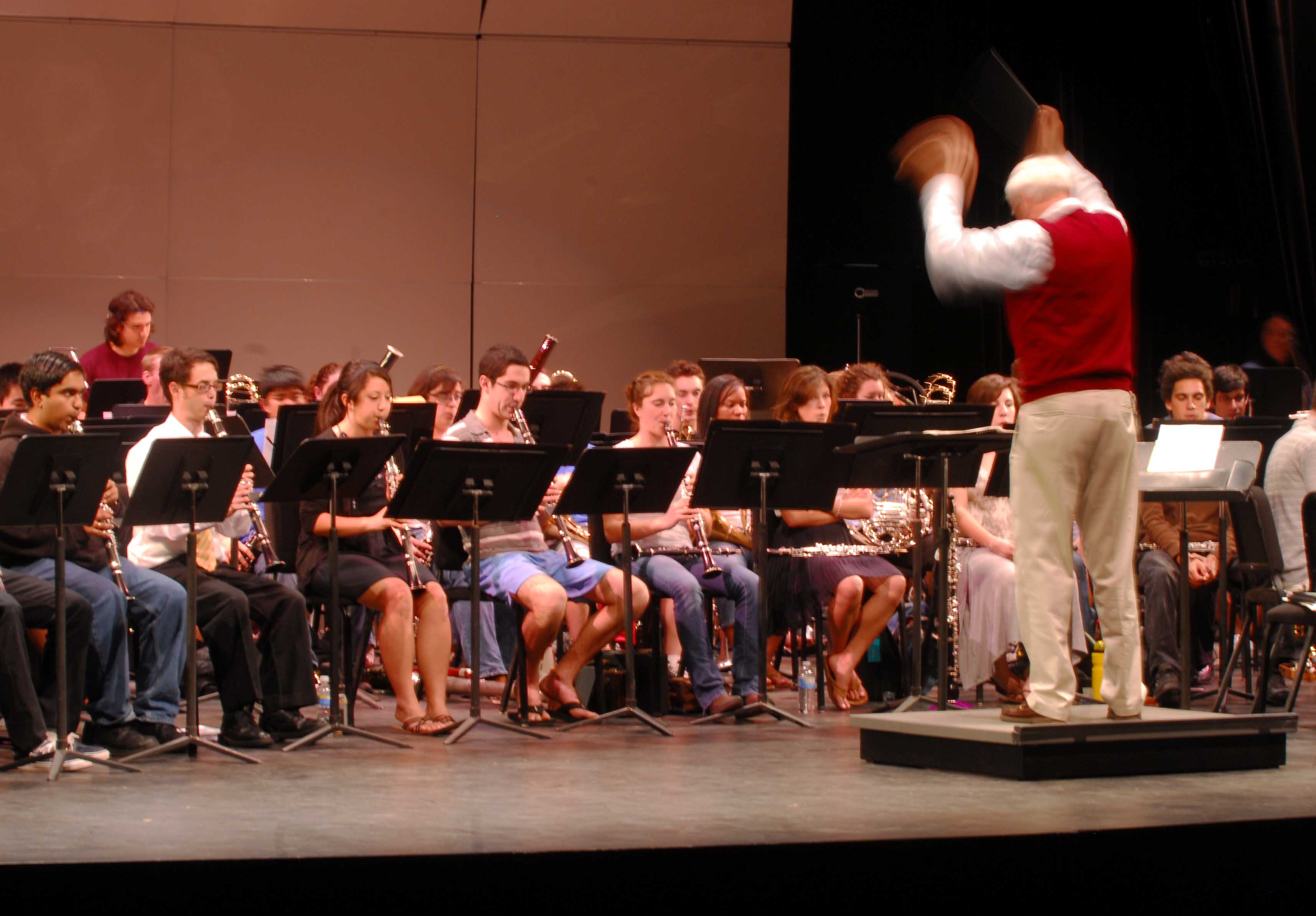Combining the talents of UCLA’s top instrumental musicians, conductors, and world-renowned faculty members, the UCLA Wind Ensemble will present a concert featuring classic repertoire alongside more modern works, including a rock song turned band piece.
The Wind Ensemble, under the direction of Thomas Lee, is comprised mostly of music students ““ undergraduates and graduate students alike. Though Lee is the primary conductor, he often passes the baton to graduate students and guest conductors to create a more well-rounded experience for both the musicians and the instructors.
“One of the beauties of this program is that Dr. Lee gives us a lot of freedom in choosing music,” said Andrey Astaiza, a horn performance graduate student and guest conductor. “We’re playing contemporary music ““ this band is very versatile. It can play new music, old music, jazz, classical … Also, the band has improved technically under (the conductors), so they are capable of playing these pieces.”
Astaiza will be conducting Frank Zappa’s “Dog Breath Variations,” a piece based on Zappa’s own song “Dog Breath.” The variations for a concert band were premiered with Zappa himself as conductor 33 years ago in Royce Hall.
“Frank Zappa was a serious composer, but he never got that type of fame like he got with his rock stuff. He wrote a lot of music that was later recorded by very, very prominent musicians,” Astaiza said. “For anyone who knows Zappa, they wouldn’t know this other aspect of his compositional career. They are used to Zappa playing shirtless and stuff like that. They didn’t know he was actually a serious composer and a really good one.”
Besides rock and roll, the Wind Ensemble will perform music that uses other types of modern instrumental techniques. Leo Sakomoto, conducting graduate student, will lead the band in Steven Stucky’s “Fanfares and Arias.”
“The Stucky piece is a whole different spectrum. It’s rather unconventional “¦ the melody is not always apparent. Getting the music out of the work is hard ““ it’s not as obvious as a beautiful line or a march. You really need to look for places to make music that’s not on the page,” Sakomoto said. “It doesn’t feature conventional performance practices ““ the saxophones are asked to play slap-tongue and (the musicians) use other extended techniques. It’s dramatic and intense, but in a different way.”
For the performers themselves, the newer repertoire can be far more demanding than more traditional works.
As musicians reach the goals composers create, more challenging pieces arise.
“As we progress, composers are able to write more technically difficult repertoire for the instruments, just because every piece is a next step in what a French hornist can do, what a tenor sax player can do … and as performers continue to meet those challenges, the repertoire gets harder and harder,” said Jessica Swift, French horn performance graduate student.
The students are not left to reach those heights alone, however ““ their instructors are right there alongside them, even in performances.
The UCLA brass faculty quintet will perform composer Jay Chattaway’s piece “Shenandoah Fantasy for Trumpet,” which Chattaway himself will be conducting. Chattaway is known for his work on film and television scores, most notably the “Star Trek” series. The brass faculty features the talents of two new instructors in the department, Chris Cooper and James Miller, as well as members that have been part of UCLA for a while, including trumpet instructor Jens Lindemann, who just returned from performing at the Olympic opening ceremonies in Vancouver.
“Jens Lindemann is … just the most welcoming person, so I think performing with people who have so much talent and personality to match really elevates the performance. Their energy feeds off yours and vice versa,” Swift said. “It’s really nice to have (the faculty) included on this because they feel so included in the school. It’s not like other schools where there’s a disjunction between the faculty and students.”
